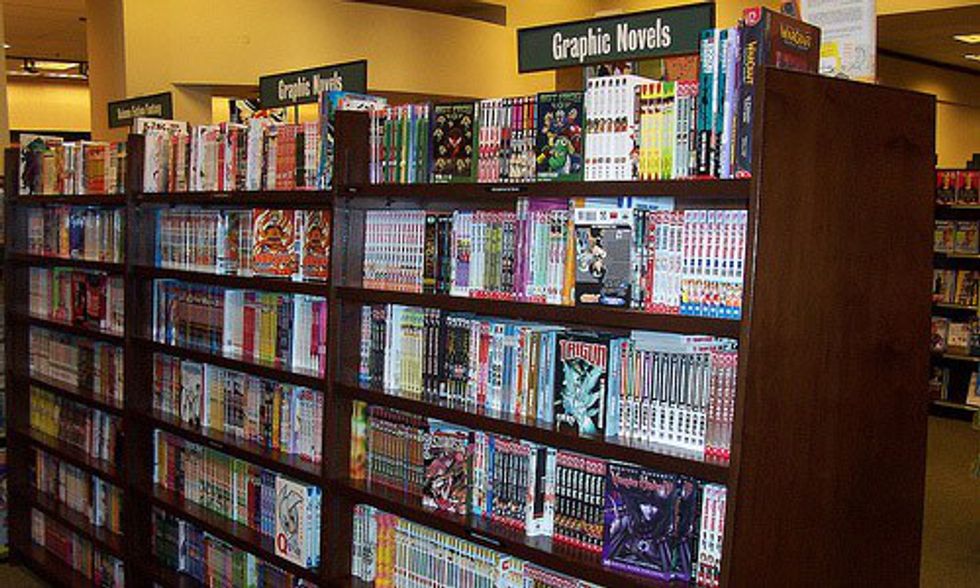It was the first day of class, and I was sitting in the classroom of a teacher I had never had before. One scan of the syllabus told me I was in for an interesting experience. The class (Jewish Literature) had the standard English major reading list of various texts that I “so looked forward to reading” because it would “further my learning.” Among the titles listed were "The Bread Givers," "What We Talk About When We Talk About Anne Frank: Stories" and Will Eisner’s "A Contract with God." I ordered my books from the bookstore. When they finally came in, and I went to pick them up, I was shocked to discover there was some sort of comic book included. Surely there must have been some mistake! Why would I, a college student, be reading something made for children and nerds?
My history with comic books and graphic novels (two totally different things as shown here) was extremely limited. Prior to this text, I read "Watchmen" by Alan Moore simply to complete a comparison of the Zack Snyder film. I was by no means in love with graphic novels, nor was I itching to get my hands on another. I thought it was too distracting and too childish. The time came, about mid-semester, when we finally began reading "ACWG." I opened it and grumbled trying to get through the complex maze of speech bubbles, images and captions. For some reason, I found myself (dare I say it?) enjoying it. I could not tell you what happened between reading "Watchmen" and "ACWG," but I was enthralled with Eisner’s ability to use the images to enhance the story.
For class, we were required to read the text and all of its parts. By this, I mean we had to read the images, frames, borders, dialogue, captions and so much more. A criticism of graphic novels and comic books is that it isn’t actually reading. People who “read” graphic novels aren’t actually reading, but they are completing a simplified form of reading. While the word count is significantly lower in a graphic novel, the details are put into the images accompanying the text rather than in the text. Images reinforce rather than replace the language. Gatsby’s world comes to life in the descriptive writing of Fitzgerald, but the author/artist of a graphic novel can skip the words to describe the sprawling cityscape with a small description as a caption. The scene comes to life through actual images rather than the words. With complex texts, the plot becomes clearer. Character relations are more clearly laid out in graphic novels. The reading is fast paced, because of the lower word count. All of these things I discovered from reading the text prior to class discussion. During our class discussion, I learned just how the pieces go together. We would complete page analysis that looked at the images and colors (or lack of color) to see new meanings the artist wanted us to uncover.
After reading this graphic novel, I was much more open to the idea of reading more. The next graphic novel I read was "Sin City" (yeah...the original inspiration for the "Sin City" films) followed by Alison Bechdel’s "Fun Home." "Fun Home" serves as an autobiographical work to Bechdel’s life and was later turned into a Tony award-winning musical. I slowly learned that there was so much to choose from in the world of graphic novels. Much like there is a movie on Netflix for everyone or a show on broadway, there is also a graphic novel that will speak to its reader -- if you let it. Next time you go to the library, might I recommend you visit the graphic novels section? You may be surprised what movie started as a graphic novel or what favorite childhood book was adapted into a graphic novel.
























